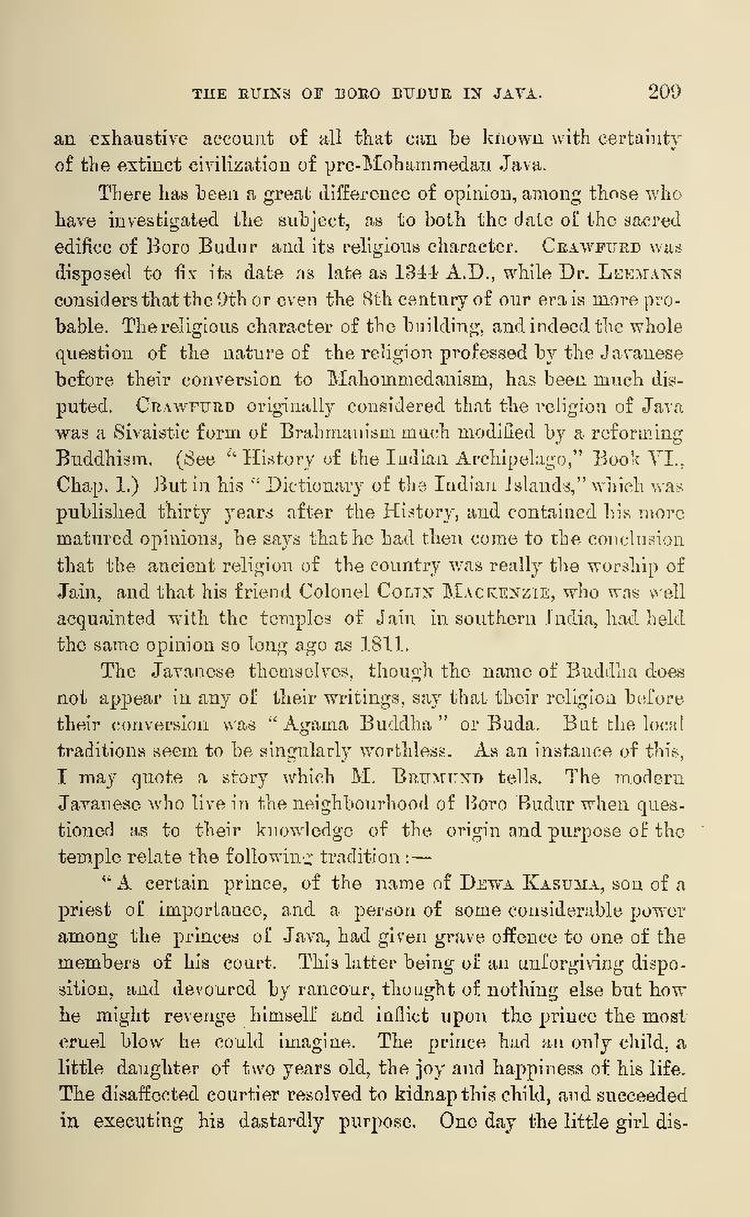an exhaustive account of all that can be known with certainty of the extinct civilization of pre-Mohammedan Java.
There has been a great difference of opinion, among those who have investigated the subject, as to both the date of the sacred edifice of Boro Budur and its religious character. CRAWFURD was disposed to fix its date as late as 1341 A.D., while Dr. LEEMANS considers that the 9th or even the 8th century of our era is more probable. The religious character of the building, and indeed the whole question of the nature of the religion professed by the Javanese before their conversion to Mahommedanism, has been much disputed. CRAWFURD originally considered that the religion of Java was a Sivaistic form of Brahmanism much modified by a reforming Buddhism. (See "History of the Indian Archipelago," Book VI., Chap. 1.) But in his "Dictionary of the Indian Islands," which was published thirty years after the History, and contained his more matured opinions, he says that he had then come to the conclusion that the ancient religion of the country was really the worship of Jain, and that his friend Colonel COLIN MACKENZIE, who was well acquainted with the temples of Jain in southern India, had held the same opinion so long ago as 1811.
The Javanese themselves, though the name of Buddha does not appear in any of their writings, say that their religion before. their conversion was "Agama Buddha" or Buda. But the local traditions seem to be singularly worthless. As an instance of this, I may quote a story which M. BRUMUND tells. The modern Javanese who live in the neighbourhood of Boro Budur when questioned as to their knowledge of the origin and purpose of the temple relate the following tradition:—
"A certain prince, of the name of DEWA KASUMA, son of a priest of importance, and a person of some considerable power among the princes of Java, had given grave offence to one of the members of his court. This latter being of an unforgiving disposition, and devoured by rancour, thought of nothing else but how he might revenge himself and inflict upon the prince the most cruel blow he could imagine. The prince had an only child, a little daughter of two years old, the joy and happiness of his life. The disaffected courtier resolved to kidnap this child, and succeeded in executing his dastardly purpose. One day the little girl dis-
